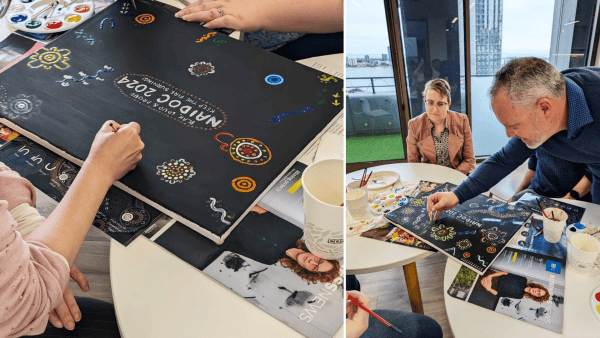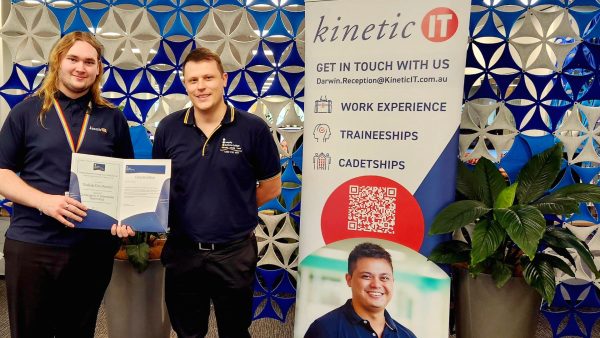How can we embrace complexity in IT environments? Leading service integration and management specialists, Simon Dorst and Michelle Major-Goldsmith, share their advice. The pair spoke about VUCA in service management at the itSMF UK ITSM22 conference.
What is VUCA?
In our forever-evolving society, there is an increasing inability to grasp the things happening around us. From the growth of disinformation to navigating contemporary politics – it’s a wild world out there.
This is true of our IT-enabled services, too. Technology components are ubiquitous and often not directly controlled by the organisation. More components mean more change but also more integrations. This evolution and the proliferation of complexity means we need to change our working practices in order to build resilience and create capability to be responsive.
Volatility, uncertainty, complexity and ambiguity, or VUCA, was first used as an acronym in 1987 in academic discussions around strategic leadership but its origins date back to as early as the Cold War. As Warren Bennis and Burt Nanus discuss, VUCA can help contextualise the organisational environment, including helping you to identify your current state and what an informed future state could look like. Forearmed is forewarned, as they say.
This insight highlights some of the concepts that we feel are critical in navigating this new VUCA world in the context of service management best practice guidance.
RELATED CONTENT: Disinformation and You
VUCA and the unknown
Many things today are unknown and unsure. VUCA blends these challenges, demanding an approach to deal with them.
In most working environments we have to make decisions without having the whole picture, handling risk and uncertainty to one extent or another. The inherent unpredictability presents a challenge to people who are used to working with predetermined processes, detailed analyses and project plans that are based on knowledge or knowability of the work.
In a VUCA environment, causal relationships are unclear, no precedents exist and you face unknown unknowns – which may lead you to not see the wood for the trees, or at least not a clear path forward. Where things are changing constantly, speed of execution and learning is a lot more important than perfect execution. Progress instead of perfection is the more effective way to go.
RELATED CONTENT: Global SIAM Survey: 9 Surprising Insights From The SIAM Community
Adjacent possible
One way of dealing with a VUCA in service management situation is not to try and find the ‘perfect’ solution (which probably doesn’t exist), but instead to explore the “adjacent possible”, as described by Stuart Kauffman.
The adjacent possible is the set of options available at a given point in time. The concept captures both the limits and the creative potential of change and innovation. In any system that is evolving, there is only a finite set of ways that the system can be changed. This can be seen as the exploration and actualisation of what is ‘available at hand’. This is the space for innovation, for combining known technologies and practices in novel ways, and for developing and implementing novel problem-solving that yields novel solutions for customers.
This mindset limits the options available and thus provides a more practical focus in dealing with unknown conditions.
RELATED CONTENT: SIAM Archetypes whitepaper: grow your service integration success
Anti-fragility
VUCA in service management and beyond is an increasing reality for many organisations. Instead of trying to predict and pre-empt what will happen, we should try to create systems that won’t fall apart or, even better, systems that might even gain from unexpected events.
We need to look no further than Mother Nature to understand the ecological metaphor of anti-fragility. Mother Nature is aggressive in destroying and replacing, in selecting and reshuffling. Yet, many natural systems not only (literally) weather the storm but thrive, like shrubland after a bushfire. Anti-fragility is beyond resilience or robustness: The resilient resists shocks and stays the same; the anti-fragile gets better.
The role of people
A challenge for VUCA in service management is how people make sense of what is going on and make plans for action. Traditionally, the default position has been to proceduralise by creating step-by-step instructions. Whilst processes can be useful to formalise repeatable activities, it is important to remember where they are valuable and where they are not. If you’re trying to make a decision about something that is affected by many different factors which interact in unknown ways and are controlled by parameters whose values you don’t understand, grabbing the procedure manual isn’t going to cut it!
We need to build capability to approach ambiguity with confidence, appreciate that different decision-making approaches are necessary within these situations and apply different heuristics based on the context.
People need to build capability to be able to sort through these situations. Sense-making frameworks like Cynefin can help people understand the situation they are in and choose an appropriate response. Analysing, hypothesising, collaboration and communication help to forge pathways; insights emerge from the confusion, and things start falling into place. Think about ‘swarming’ and experimentation whereby from ambiguity possibility arises: Experiment, create, learn – rinse and repeat.
RELATED CONTENT: Quality Assurance versus testing: What’s the difference and do I need both?
VUCA in service management
In this recent pandemic world, we have seen some amazing outcomes at personal, organisational, political, social and technical levels. These were achieved not by following predetermined processes, but by responding to changing VUCA in service management environments.
RELATED CONTENT: SIAM Archetypes: Shortcuts for success
Why would we let these be a ‘one off’?
We need to leverage these newfound experiences and embed these attitudes, behaviours and high-velocity ways of working. Heuristic thinking allows us to quickly obtain an appropriate solution to a problem through exploration and intuition. It accepts that there cannot be a process or work instruction for every situation, but instead people can add value through inventive and responsive ‘heuristic’ work.
Modern service management practices, like ITIL 4, SIAM, Agile, Cynefin, Design Thinking and more, embrace many of the concepts and approaches highlighted here. Work practices such as ‘swarming’ and DevOps are examples of human-led, cross-functionally collaborative philosophies for heuristic work (to name but a few).
So, it’s now up to the organisations and to you, to move away from the traditional service management process-focus and introduce some of the new ways of working.
Find out more about VUCA in service management and read more insights on our website.
About the authors
About Simon Dorst
Simon Dorst is Kinetic IT’s Manager for Service Management Services. ITIL trained in 1992, he has spent most of his career educating and advising people and organisations of its benefits and application in the Netherlands, Singapore and Australia.
Known as the ‘ITIL Zealot’, he was the Lead Architect for the Scopism 2nd edition Service Integration and Management Bodies of Knowledge (BoK, 2020), the SIAM Professional BoK (2018) and was also a founder member of the SIAM Foundation BoK architect team (2016). Simon contributed to the VeriSM publication (2017) and co-authored the VeriSM pocket guide (2018).
In 2018 Simon was named one of HDI’s Top 25 Thought Leaders in Technical Support and Service Management; and was awarded the itSMF Australia Service Management Champion of the Year, as well as the Thought Leader of the Year (together with Michelle Major-Goldsmith). In 2022, he received the Service Management Lifetime Contribution award from itSMF Australia.
Follow Simon Dorst on Twitter: @ITILZealot
About Michelle Major-Goldsmith
Michelle Major-Goldsmith is the Service Management Capability Manager with Kinetic IT. Her role is to educate rather than ‘just train’, mentor and advise Kinetic IT staff and its customers in the principles of service management and the practical application of these principles in various environments.
Alongside Simon, she was the Lead Architect for the Scopism 2nd edition Service Integration and Management Bodies of Knowledge (BoK, 2020), the SIAM Professional BoK (2018) and was also a founder member of the SIAM Foundation BoK architect team (2016). Michelle contributed to the VeriSM publication (2017) and co-authored the VeriSM pocket guide (2018). Michelle was awarded the itSMF Australia Service Management Champion of the Year in 2017 and Thought Leader of the Year (together with Simon Dorst) in 2018. The same year Michelle was named as one of the top 25 service management pros and experts to follow on Twitter. In 2020 and again in 2022 HDI was acknowledged here as one of the Top 25 Thought Leaders in Technical Support and Service Management.
Follow Michelle Major-Goldsmith on Twitter: @MMG9898

















